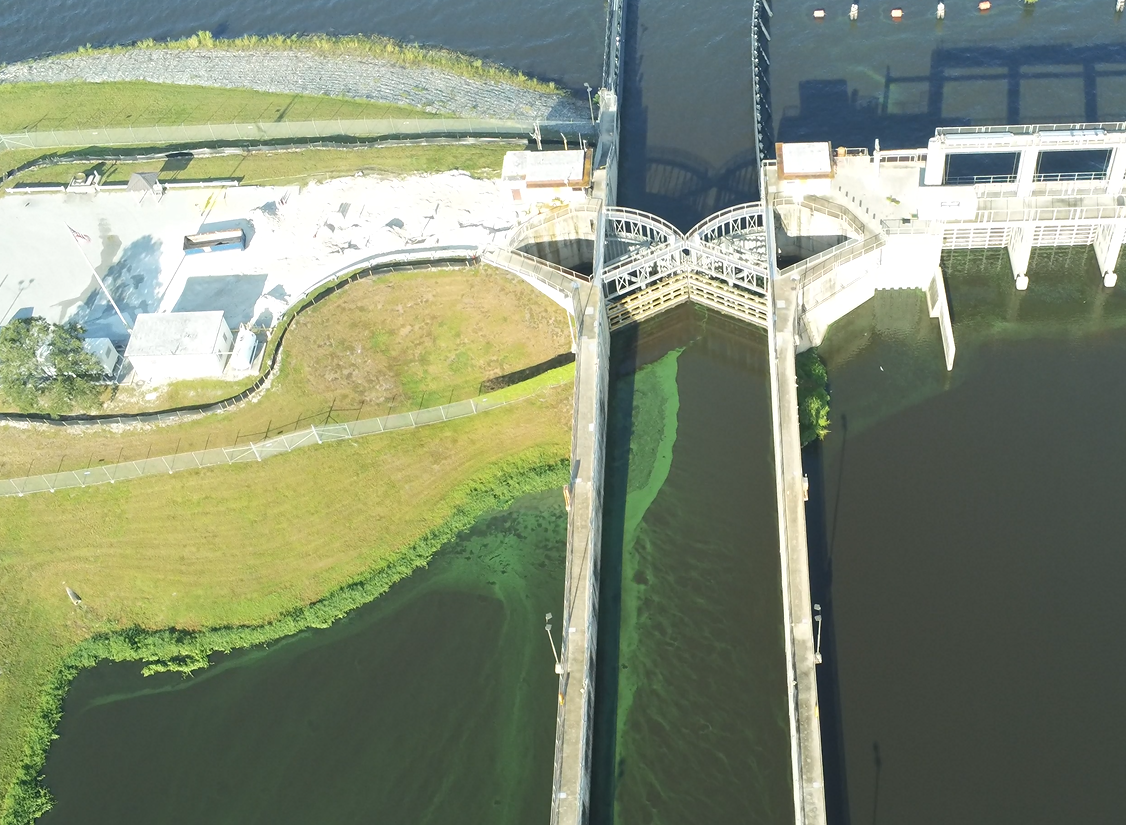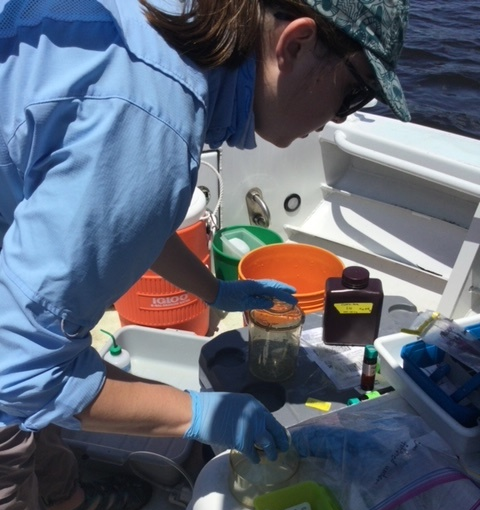Last summer, blooms of blue-green algae spread across 440 miles of Lake Okeechobee, covering nearly half of the state’s largest inland lake. For years, these blooms have posed a health hazard to the lake’s vegetation and wildlife, and to the people who swim in and drink the lake’s water. Scientists at the University of Florida, led by Elise Morrison, Ph.D., assistant professor in the environmental engineering sciences department, are zooming in on potentially bloom-causing nutrients.

“Harmful algal blooms are toxic to humans and other animals, and they have negative economic consequences, too,” said Robert Scharping, Ph.D., a postdoctoral associate working with Morrison. “The trouble is that the mechanisms that fuel these algal blooms are complex, and they’re not the same everywhere you go. It takes a lot of information from the local ecosystem to know what’s happening.”
Researchers from the Morrison lab travel monthly to the St. Lucie River Estuary, which receives water from multiple sources including Lake Okeechobee. They collect samples to track the sources of nutrients that can fuel freshwater cyanobacterial and marine algal blooms in this system. The team uses a powerful technique called stable isotope analysis, which helps them identify sources of elements like nitrogen or carbon. As water moves through cities, agricultural settings, septic tanks, groundwater and streams, ecological processes leave ‘subatomic fingerprints’ on elements in the water. Scientists use these unique fingerprints to identify nutrient sources by measuring small differences in naturally occurring isotopes in water samples.

“So far, we’re seeing patterns similar to what previous studies have found in the area,” said Scharping. “Our preliminary results suggest that, among other sources, human wastewater contributes substantially to nitrogen loads in the estuary.”
This data will also be used to develop cutting-edge computational methods and process-based models to simulate water flow and forecast water quality. Ultimately, water resource agencies, such as the U.S. Army Corps of Engineers (USACE) and the State of Florida, could use these models to inform management strategies for short-term response and long-term planning.

These efforts to optimize water quality management and investment decisions in Lake Okeechobee and its connecting watersheds and estuaries are funded by the U.S. Army Corps of Engineers (USACE) Engineering Research and Development Center (ERDC). The University of Florida team is led by Elise Morrison, Ph.D., David Kaplan, Ph.D., professor in the Department of Environmental Engineering Sciences and Ed Phlips, Ph.D., professor in the School of Forest, Fisheries and Geomatics Sciences. The project is a partnership of the University of Florida, University of South Florida (USF), Sanibel Captiva Conservation Foundation (SCCF), NC State University and USACE.
Read more in this article.
—
By Megan Sam
